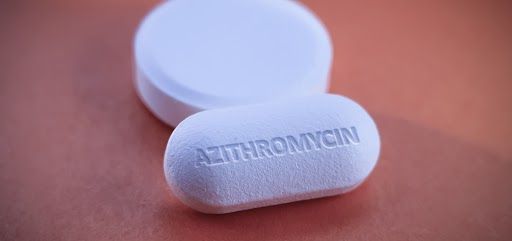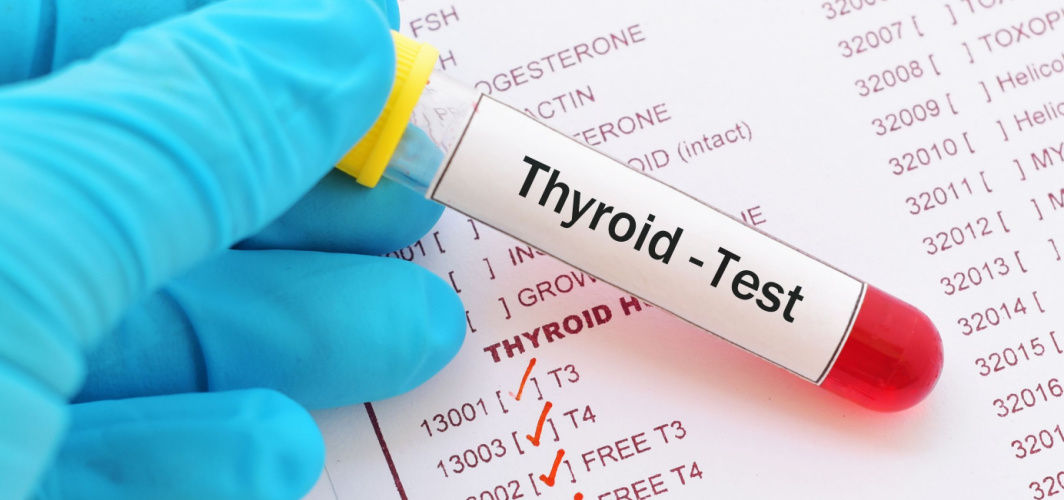General Health
Postprandial Blood Sugar Test (PPBS) – Normal Range , Purpose, Procedure and Results Interpretation
6 min read
By Apollo 24|7, Published on - 05 May 2025
Share this article
0
0 like
.jpg?tr=q-80)
A Postprandial Blood Sugar (PPBS) test is a diagnostic test used to measure the blood sugar level after eating, typically two hours following a meal. This test is valuable for detecting and managing conditions like diabetes, hypoglycaemia, and metabolic syndrome. It helps assess how well your body manages blood sugar levels after food intake. This article will explore the purpose of the PPBS test, how to prepare for it, the procedure involved, the normal range for PPBS, and how to interpret the results, along with the special ranges for females and males.
Purpose of the Postprandial Blood Sugar Test
The Glucose, Post Prandial (PP), 2 Hours test measures blood sugar exactly two hours after a meal. Its main purpose is to assess how well the body processes glucose and to monitor blood sugar control, especially in people with diabetes. It is crucial in diagnosing and managing:
- Diabetes Management: The test is essential for monitoring blood sugar levels in individuals with diabetes, particularly for understanding post-meal glucose spikes.
- Assessing Insulin Resistance: High PPBS readings can indicate insulin resistance, which is a precursor to type 2 diabetes.
- Hypoglycaemia and Hyperglycaemia: The test can detect instances of low or high blood sugar following food consumption.
- Postprandial Glucose Control: Regular testing helps track how well dietary changes, medication, or insulin therapy are controlling blood sugar levels after eating.
- Monitoring Metabolic Health: It is used in assessing the overall metabolic health, including identifying conditions such as prediabetes.
Preparation for a PPBS Test
Preparing for a Postprandial Blood Sugar test is relatively simple, but certain steps can ensure more accurate results:
1. Fasting Before the Test: You may be required to fast for at least 8–12 hours before the test, depending on your doctor’s instructions.
2. Eat a Standard Meal: A balanced meal is recommended before the test. The test is typically conducted two hours after this meal, so it’s essential to follow the diet prescribed by your healthcare provider.
3. Avoid Alcohol and Certain Medications: Alcohol and some medications can affect blood sugar levels. Make sure to inform your healthcare provider about any medications or supplements you are taking.
4. Stay Hydrated: Drink plenty of water before and after the test. Avoid sugary drinks or caffeine as they can impact blood sugar levels.
5. Monitor Symptoms: If you feel unusually weak or dizzy before the test, notify your healthcare provider, as these could be symptoms of abnormal blood sugar levels.
Procedure of the Postprandial Blood Sugar Test
The PPBS test is straightforward and involves the following steps:
1. Eating a Standardised Meal: You’ll be asked to consume a specific meal or snack containing 50–75 grams of carbohydrates, as per your doctor’s instructions.
2. Blood Sample Collection: Exactly two hours after eating, a blood sample will be collected either from a vein in your arm or via a finger prick.
3. Laboratory Analysis: The sample is then sent to the lab to measure your postprandial blood sugar level accurately.
Normal Range of PPBS
The results of the PPBS test are used to determine how effectively the body is processing glucose after eating. The normal range of PPBS can vary based on factors such as age, gender, health conditions, and individual metabolic factors. Understanding these ranges helps interpret the test results more accurately.
Note: Always refer to the lab-specific reference range for precise evaluation.
Result Interpretation of the PPBS Test
Interpreting PPBS results involves comparing the test results with established normal ranges to determine if there is any cause for concern. Below are common results and their possible implications:
1. Normal Results:
- Result: 140–180 mg/dL (7.8–10.0 mmol/L) two hours after eating.
- Indication: This range is considered normal, meaning the body is effectively managing glucose levels post-meal.
2. Elevated PPBS Levels:
- Result: >180 mg/dL (10.0 mmol/L) two hours after eating.
- Indication: Elevated PPBS levels suggest impaired glucose metabolism and could be a sign of prediabetes or diabetes. Persistent high levels may indicate the need for further tests to diagnose these conditions.
3. Low PPBS Levels:
- Result: <70 mg/dL (3.9 mmol/L) two hours after eating.
- Indication: Low PPBS levels may indicate hypoglycaemia, a condition where blood sugar drops below normal levels. This can be caused by various factors, such as excessive insulin use or certain medications.
What Affects PPBS Test Results?
Several factors can influence the results of a Postprandial Blood Sugar test, leading to either false positives or false negatives. It is essential to consider these factors when interpreting the test:
- Meal Composition: The type of food you eat before the test can impact the results. A meal high in carbohydrates or sugar can cause an increase in blood sugar levels.
- Exercise: Physical activity can lower blood sugar levels, potentially affecting test outcomes.
- Medications: Certain medications, such as steroids or diuretics, can raise blood sugar levels, while insulin and some diabetes medications can lower them.
- Stress and Illness: Physical stress, such as illness or injury, can cause a temporary rise in blood sugar levels.
- Hydration: Dehydration can cause elevated blood sugar levels, which may affect the test result.
Causes of Abnormal PPBS Results
Abnormal PPBS results can be indicative of underlying health conditions, including:
- Diabetes Mellitus: Elevated PPBS levels may suggest that the body is unable to produce or use insulin effectively, leading to persistent high blood sugar levels.
- Prediabetes: A prediabetic condition is characterised by higher-than-normal blood sugar levels but not yet high enough to be diagnosed as diabetes.
- Hypoglycaemia: Low PPBS levels may be a sign of hypoglycaemia, which can occur due to insulin overdose or other medical conditions.
- Insulin Resistance: High blood sugar levels after meals can indicate insulin resistance, which is a hallmark of type 2 diabetes.
- Gastrointestinal Conditions: Certain conditions affecting digestion can alter the way glucose is absorbed, leading to abnormal PPBS results.
Managing Abnormal PPBS Results
When the PPBS results fall outside the normal range, it is important to take the following steps:
- Consult a Healthcare Provider: If your PPBS levels are high or low, it is essential to consult your healthcare provider to determine the underlying cause.
- Additional Testing: Your doctor may recommend further testing, such as a fasting blood glucose test, HbA1c test, or oral glucose tolerance test (OGTT) to confirm a diagnosis.
- Lifestyle Changes: If prediabetes or diabetes is diagnosed, lifestyle changes such as regular exercise, a balanced diet, and weight management can help control blood sugar levels.
- Medication: In some cases, medication, including insulin or oral hypoglycaemic drugs, may be necessary to manage blood sugar levels.
Postprandial Blood Sugar Test During Pregnancy
During pregnancy, it is important to monitor blood sugar levels to detect gestational diabetes, which can develop during pregnancy. A PPBS test may be part of the routine prenatal screening, particularly for women at higher risk. Gestational diabetes can affect both the mother and the baby, so managing blood sugar levels is essential to avoid complications.
Conclusion
The Postprandial Blood Sugar (PPBS) test is a crucial tool in diagnosing and managing diabetes and other metabolic conditions. Regular monitoring of PPBS levels helps ensure that blood sugar levels are well-regulated, especially after meals. Understanding the normal PPBS range, including the PPBS normal range for females, males, and children, ensures that results are interpreted correctly. If your PPBS test results are abnormal, it is essential to consult with your healthcare provider to understand the underlying cause and determine the best course of action for treatment.
General Health
Frequently Asked Questions
Can dehydration affect the PPBS test result?
Can dehydration affect the PPBS test result?
If my PPBS test result is high, what should I do?
If my PPBS test result is high, what should I do?
Are there other tests besides PPBS for blood sugar?
Are there other tests besides PPBS for blood sugar?
Any advancements in PPBS testing?
Any advancements in PPBS testing?
Can I drink water before a PPBS test?
Can I drink water before a PPBS test?
Is PPBS useful for assessing kidney health?
Is PPBS useful for assessing kidney health?
Can PPBS be lower than fasting glucose?
Can PPBS be lower than fasting glucose?
What’s the difference between PP and random blood sugar?
What’s the difference between PP and random blood sugar?
What causes postprandial hypoglycaemia?
What causes postprandial hypoglycaemia?
What is the best fasting blood sugar level?
What is the best fasting blood sugar level?
Leave Comment
Recommended for you
.jpg?tr=q-80)
General Health
CA 125 Test – Normal Range, Purpose, Procedure and Results Interpretation
Understand the CA 125 Test: Learn about its purpose in monitoring certain cancers and other conditions, the simple procedure, normal range interpretations, and what elevated levels might indicate.

General Health
All You Need To Know About Azithromycin
Azithromycin is a versatile antibiotic used against different bacterial infections like sinusitis, pneumonia, and throat infections. Emphasizing responsible usage, the article covers proper dosage, precautions for allergies and medical history, and potential side effects. Explore the importance of adhering to prescribed dosages, completing the full course of treatment, and avoiding self-medication.

General Health
Thyroid Tests: Process, Preparations, And Results
Thyroid tests are crucial in evaluating thyroid function and detecting potential thyroid disorders. By understanding the various types of tests, knowing when to get tested, preparing adequately, and interpreting the results with professional guidance, individuals can effectively manage their thyroid health for overall well-being and vitality.
Subscribe
Sign up for our free Health Library Daily Newsletter
Get doctor-approved health tips, news, and more.
Visual Stories

Science-backed Home Remedies for Burns and Blisters
Tap to continue exploring
Recommended for you
.jpg?tr=q-80)
General Health
CA 125 Test – Normal Range, Purpose, Procedure and Results Interpretation
Understand the CA 125 Test: Learn about its purpose in monitoring certain cancers and other conditions, the simple procedure, normal range interpretations, and what elevated levels might indicate.

General Health
All You Need To Know About Azithromycin
Azithromycin is a versatile antibiotic used against different bacterial infections like sinusitis, pneumonia, and throat infections. Emphasizing responsible usage, the article covers proper dosage, precautions for allergies and medical history, and potential side effects. Explore the importance of adhering to prescribed dosages, completing the full course of treatment, and avoiding self-medication.

General Health
Thyroid Tests: Process, Preparations, And Results
Thyroid tests are crucial in evaluating thyroid function and detecting potential thyroid disorders. By understanding the various types of tests, knowing when to get tested, preparing adequately, and interpreting the results with professional guidance, individuals can effectively manage their thyroid health for overall well-being and vitality.